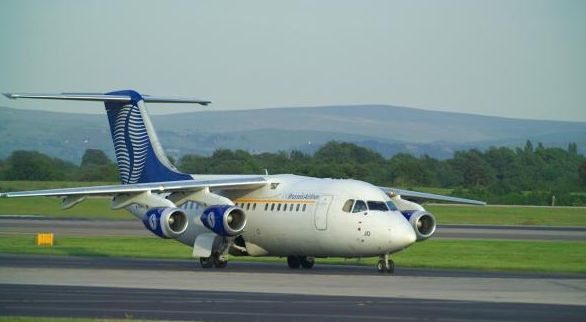BAE Systems has been awarded a £15.5 million contract by the UK Ministry of Defence (MoD) for the conversion of two BAe 146-200QC (Quick Change) aircraft from commercial to military configuration for use by the Royal Air Force.
The two aircraft, which have been acquired by the MoD in a separate transaction with TNT Airways S.A of Belgium, will be used after conversion in both passenger and freight roles to augment in-theatre tactical aircraft numbers, particularly the Lockheed C130 Hercules force, during the upcoming extraction phase of Operation Herrick, the current Afghanistan campaign.
The acquisition of the aircraft and their conversion is being undertaken under an Urgent Operational Requirement (UOR) and according to the MoD will offer the most timely, value–for-money solution to temporarily provide additional tactical aircraft capacity when compared against a range of existing in-service and new aircraft solutions.
BAE Systems Regional Aircraft at Prestwick will be responsible for the design and integration of the military equipment to be fitted to the aircraft, the sourcing of the equipment and management of the supply chain and overall management of the conversion programme. The actual conversion is being carried out at the Hawker Beechcraft Services facility at Broughton, North Wales under sub-contract to BAE Systems.
Hawker Beechcraft Services has considerable expertise in the BAe 146 for the RAF having originally completed the interior conversions of the BAe 146-100s currently operated by No. 32 (The Royal Squadron) and subsequently upgrading these aircraft in recent years.
Among the military equipment to be fitted will be Defensive Aids Systems to enable these UOR aircraft to be protected to appropriate levels, at least equivalent to other UK aircraft operating in Afghanistan.
Both aircraft have been delivered from Belgium to Broughton and work is underway, with delivery to the MoD required by March 2013.
The BAe 146QC is equipped with a large 131 inch wide and 76 inch high (3.33m x1.93m) rear upward-opening freight door giving a large aperture for the easy loading of pallets, containers and awkwardly-shaped cargo. The large cabin volume of the aircraft will allow up to 23,500 lbs (10.6 tonnes) of freight to be carried.
The cabin floor of the aircraft has a freight loading system which allows either palletised freight or passenger seating fixed to pallets to be rapidly installed. The passenger layout is to full commercial aircraft standards with interior trim, carpeting, toilet and galleys available front and rear and overhead passenger service units for each seat row and overhead luggage bins. There are also two large underfloor baggage holds.
In commercial operations the BAe 146QC is capable of carrying up to 96 passengers, but in military use, the MoD anticipates that the constraints of operational altitudes and temperatures and the increased average weights of armed and body-armoured military personnel will result in a lower number of passengers being carried.
BAE Systems first promoted the concept of the BAe 146 as a cost-effective transport aircraft for military use at the Defence Services & Equipment International Exhibition in London in September 2009. In 2012 the concept is even more relevant given the heavy operational demands faced by many Air Forces at a time when the current economic climate is forcing significant defence budget cuts by most governments.
Dubbed the BAe 146M, or the Avro RJM for the later production variant, the aircraft is seen as attractive to Air Forces who operate ageing turboprop and jet airliners that are currently used for transport and communications tasks. It is estimated that there are currently over 1700 such aircraft in service with nearly 150 air arms and many of these aircraft are in excess of 40 years old.
BAE Systems believes the BAe 146M/Avro RJM could also be used by Air Forces to complement existing fleets of tactical airlifters such as C130 Hercules, by taking on a wide variety of non-tactical air transport roles, thereby prolonging the fatigue life on ageing tactical assets. The BAe 146M/Avro RJM, however, has a performance capability that means it can realistically undertake some of the more challenging air transport support roles, including operations from unpaved runways.










